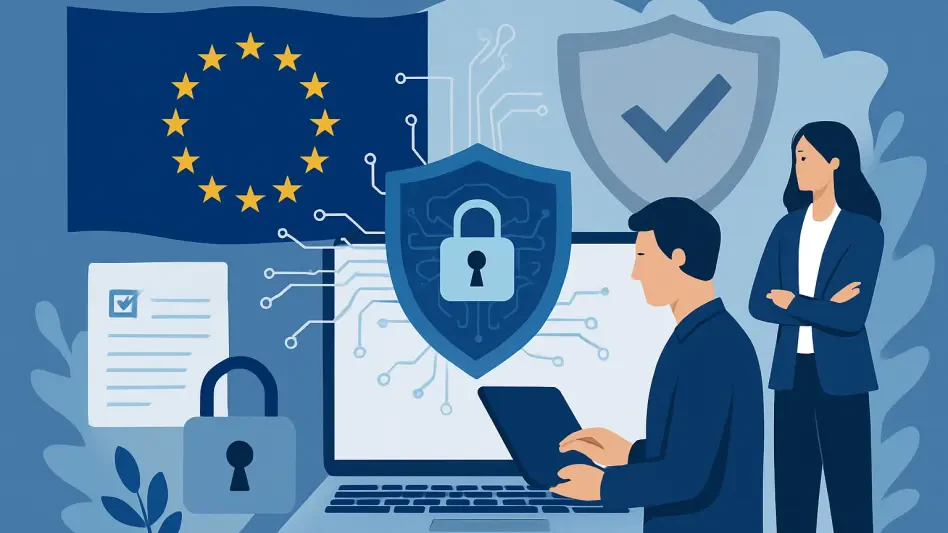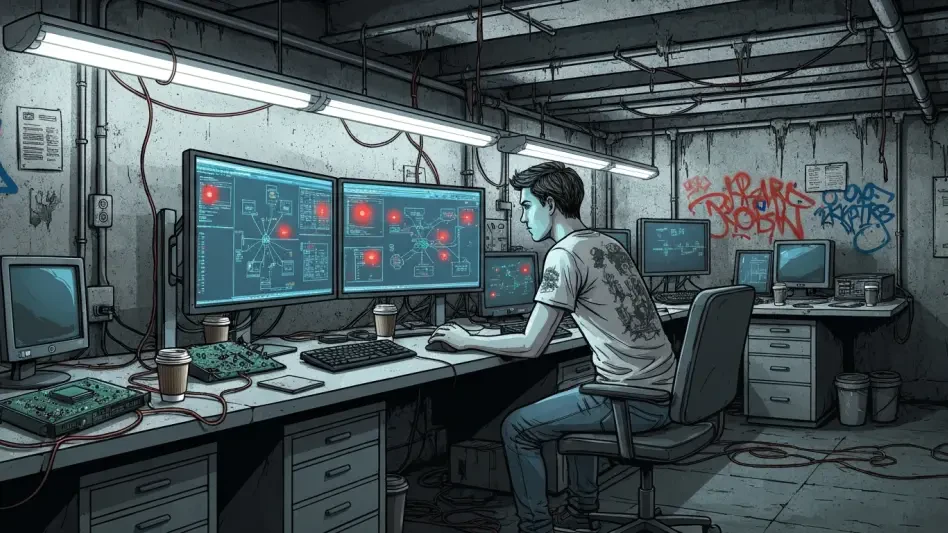In an era where cyber threats loom larger than ever, the European Union (EU) has positioned itself as a formidable force in shaping the future of digital security, prompting debates on whether it truly stands as the global leader in cybersecurity policy. At the Bucharest Cybersecurity Conference held from October 6 to 9 this year, Luis Miguel Vega Fidalgo, International Cybersecurity Policy Coordinator at the European Commission’s Directorate-General for Communications Networks, Content and Technology (DG Connect), delivered a powerful address on the EU’s pioneering efforts. With cybercrime evolving in complexity—from ransomware attacks crippling infrastructure to state-sponsored espionage—the stakes for robust policy have never been higher. The EU’s response, highlighted by groundbreaking legislation, aims to not only address these escalating risks but also set a precedent for the rest of the world. Vega Fidalgo’s insights underscore a strategic vision that blends security imperatives with economic fairness, but the question remains: does this approach genuinely place the EU at the forefront of global cybersecurity governance? As digital landscapes become battlegrounds for both innovation and malice, examining the EU’s policies offers a critical lens into how regional strategies might influence international norms.
Pioneering Legislation and Its Impact
Unpacking the Cyber Resilience Act
The cornerstone of the EU’s cybersecurity strategy is the Cyber Resilience Act (CRA), a transformative piece of legislation adopted last October and slated for mandatory enforcement by December 2027. This Act sets unprecedented mandatory cybersecurity standards for nearly all connected products entering the EU market, spanning from initial design phases through to post-market updates and security patches. Unlike narrower regulations seen elsewhere, the CRA’s comprehensive scope ensures that manufacturers must embed security into every stage of a product’s lifecycle. Vega Fidalgo described this as a revolutionary step, noting that no other region has implemented such an extensive framework. This ambitious policy targets a wide array of digital and electronic devices, aiming to fortify the EU’s digital ecosystem against increasingly sophisticated threats. By imposing these rigorous requirements, the EU seeks to prevent vulnerabilities before they can be exploited, marking a shift from reactive to proactive defense mechanisms in the digital realm.
Beyond its technical mandates, the CRA also introduces a structured timeline for compliance, providing manufacturers with a 36-month transition period to align with the new standards before they become obligatory in late 2027. This window reflects an understanding of the practical challenges businesses face in adapting to such sweeping changes, especially for industries reliant on complex supply chains. Vega Fidalgo emphasized that this period is crucial for ensuring that companies, regardless of size, can prepare without facing immediate disruption. The Act’s forward-thinking design not only addresses current cyber risks but also anticipates future threats, positioning the EU as a potential blueprint for global cybersecurity regulations. However, the success of this transition hinges on clear guidance and support from regulatory bodies to navigate the intricate requirements, highlighting the importance of collaboration between policymakers and industry stakeholders.
Challenges in Rolling Out New Standards
Implementing the CRA across the EU’s 27 member states presents a formidable logistical and political challenge, given the diversity of legal systems, economic conditions, and technological readiness. Vega Fidalgo acknowledged the complexity of harmonizing standards within the single internal market, stressing that a unified approach is essential to avoid fragmented enforcement that could undermine the Act’s effectiveness. Disparities in resources and expertise among member states could lead to inconsistent application, potentially creating loopholes for cyber threats to exploit. The European Commission’s role in providing detailed guidelines and fostering cooperation will be pivotal in overcoming these hurdles. This harmonization effort is not just about technical alignment but also about ensuring that all regions within the EU can uphold the same level of digital resilience, regardless of their starting point.
Another critical aspect of implementation lies in supporting diverse stakeholders, particularly small and medium-sized enterprises (SMEs), which form a significant portion of the EU’s economic fabric. The CRA’s stringent requirements risk disproportionately burdening smaller businesses that may lack the resources of larger corporations to swiftly adapt. Vega Fidalgo highlighted that specific considerations have been integrated into the policy to mitigate this impact, such as tailored support mechanisms and phased compliance expectations. Ensuring that SMEs can meet these standards without stifling innovation or market participation is a delicate balance. The EU’s commitment to fairness in this regard aims to maintain a competitive landscape where security enhancements do not come at the expense of economic vitality, setting a nuanced precedent for how cybersecurity policies can be both rigorous and inclusive.
Shaping Global Cybersecurity Norms
A Shift to Mandatory Frameworks
One of the defining features of the EU’s cybersecurity strategy is its decisive shift from voluntary guidelines to mandatory regulations, a move that starkly contrasts with the approaches of many other regions where compliance often remains optional. This proactive stance, as articulated by Vega Fidalgo, positions the EU as a frontrunner in governance by embedding security as a non-negotiable requirement for market access. While some countries rely on industry self-regulation or limited sectoral rules, the EU’s comprehensive legal framework addresses a broader spectrum of risks across all connected products. This bold policy direction not only aims to protect consumers and infrastructure but also signals to the global community that cybersecurity must be treated as a fundamental priority rather than an afterthought. Such a model challenges other nations to rethink their own strategies in the face of escalating digital threats.
The international influence of this approach is already becoming evident, with growing interest from other countries in adopting or adapting elements of the EU’s framework. Vega Fidalgo noted that the CRA, in particular, stands as a unique piece of legislation with no direct equivalent elsewhere, sparking discussions on whether it could serve as a template for global standards. This potential for policy diffusion reflects a broader trend where regional innovations in cybersecurity might pave the way for harmonized international norms. As nations grapple with similar challenges—ranging from data breaches to critical infrastructure attacks—the EU’s mandatory model offers a compelling case study. The ripple effect of this leadership could encourage a more unified global response to cyber risks, reducing disparities in security preparedness across borders.
Economic Fairness Alongside Security
A key pillar of the EU’s cybersecurity policy is its commitment to maintaining an open and competitive market, ensuring that stringent security standards do not translate into barriers for entry. Vega Fidalgo emphasized that the EU market welcomes companies from any origin, provided they comply with the established legal and technical requirements. This non-discriminatory approach fosters fair competition, allowing global businesses to participate in one of the world’s largest economic zones without facing undue prejudice. By tying market access to cybersecurity compliance, the EU creates an environment where security becomes a shared value rather than a competitive disadvantage, encouraging firms to prioritize digital resilience as a core business principle.
Moreover, the CRA is framed not as a regulatory burden but as an opportunity to build trust in digital products, thereby enhancing economic vitality. Vega Fidalgo pointed out that compliance with these standards can serve as a market differentiator, signaling reliability to consumers and partners alike. This dual focus on security and economic opportunity is particularly significant in an era where trust in technology is often undermined by high-profile breaches. For businesses, meeting the EU’s requirements could translate into a competitive edge, while for consumers, it offers greater assurance in the safety of connected devices. This balance underscores the EU’s holistic vision, where robust cybersecurity policies are designed to support, rather than hinder, the dynamism of the digital economy.
Cybersecurity in a Geopolitical Context
Escalating Threats and Regional Tensions
The urgency of the EU’s cybersecurity initiatives is deeply tied to the rising tide of cyber threats, often exacerbated by geopolitical tensions near its borders. Vega Fidalgo highlighted how hostile activities in proximity to EU member states, such as those near Romania, have intensified the need for robust digital defenses. These threats are not merely technical but often carry strategic intent, with state-sponsored attacks targeting critical infrastructure, government systems, and private enterprises. The sophistication and frequency of such incidents have pushed cybersecurity to the forefront of regional policy agendas. In this context, the EU’s legislative efforts are a direct response to a volatile environment where digital security intersects with national sovereignty, making the protection of digital assets a matter of urgent priority.
This geopolitical backdrop also amplifies the broader implications of cyber risks, as attacks can destabilize not just individual entities but entire economies and political systems. The EU’s recognition of these interconnected dangers drives its push for comprehensive policies like the CRA, which aim to create a fortified digital frontier across member states. Vega Fidalgo’s remarks suggest that failing to address these threats could have cascading effects, undermining trust in both technology and governance. The focus on resilience, therefore, extends beyond preventing data breaches to safeguarding the very fabric of societal stability. This perspective positions the EU’s cybersecurity measures as critical tools in navigating an increasingly contentious global landscape, where digital and physical security are inextricably linked.
Strategic Role of Digital Defense
Beyond immediate protection, the EU’s cybersecurity policies serve as a strategic asset in the broader arena of international relations, reinforcing its position as a global actor. Vega Fidalgo’s insights reveal how legislation like the CRA acts as both a shield against cyber threats and a statement of the EU’s commitment to digital sovereignty. By establishing rigorous standards, the EU not only safeguards its internal market but also projects influence, encouraging alignment with its norms among trading partners and allies. This strategic dimension underscores the importance of cybersecurity as a component of foreign policy, where technological resilience can shape diplomatic and economic interactions in a world increasingly defined by digital competition.
Furthermore, the intersection of cybersecurity with geopolitics highlights the EU’s role in setting precedents for how nations can collectively address shared digital challenges. The policies enacted today could influence future international agreements on cyber norms, potentially reducing the risk of conflict in cyberspace through standardized expectations. Vega Fidalgo’s emphasis on the EU’s pioneering approach suggests that its leadership extends beyond legislation to shaping a vision for global digital security. As cyber threats continue to evolve alongside geopolitical dynamics, the EU’s proactive measures offer a framework for resilience that other regions might emulate. This strategic foresight ensures that digital defense becomes a cornerstone of broader security discussions, reflecting the profound impact of the EU’s efforts in a tense and interconnected world.








